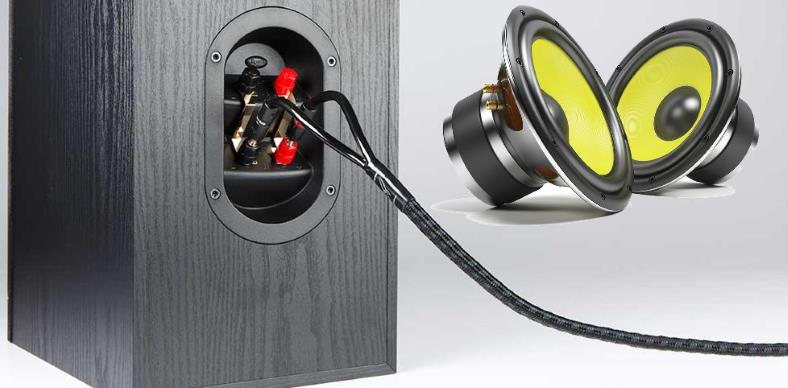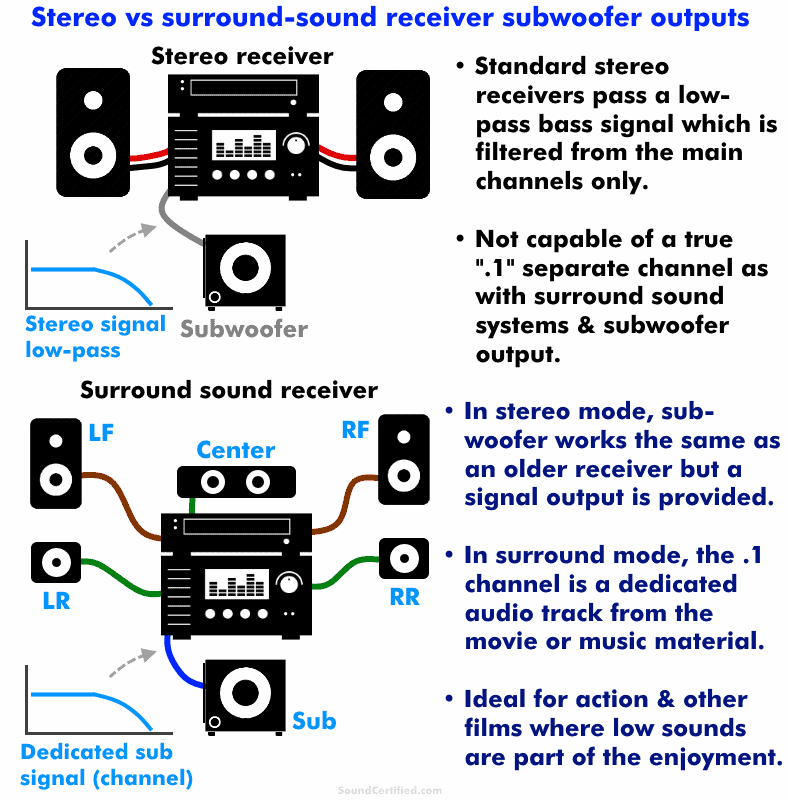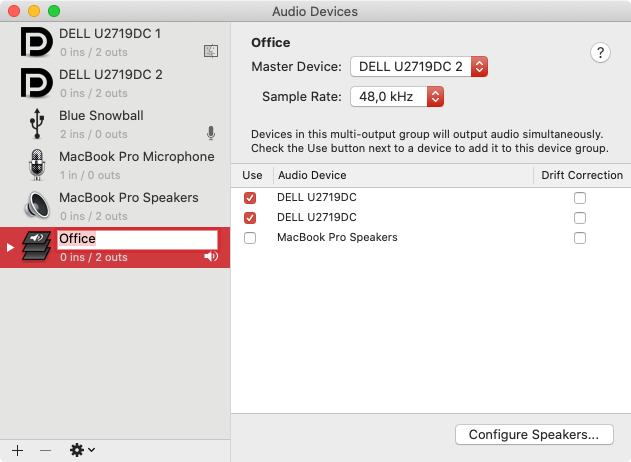Setting Crossover Mac Multi Output
Our customers are our biggest supporters. CrossOver Mac and CrossOver Linux have helped hundreds of thousands of people run Windows software on Mac and Linux worldwide. See what people who have actually purchased and used CrossOver think. They say great things. Have something nice to say about CrossOver, email us, we’d love to hear from you. When setting the output gain levels on our line converters (LC2i, LC6i, LC7i, LC8i, LCQ-1 etc) our goal is to match the gain output, with the gain input sensitivity of your aftermarket amplifier. The idea is to send the hottest signal possible out of the converter, without distorting the output of the converter, and also not going over the.
This guide provides an overview of how to configure audio playback in JRiver Media Center. Please follow the steps below in order.
- 1OS Sound Support
- 2Audio Output Settings
- 3Output Format
OS Sound Support
Begin by verifying that your Operating System recognizes your sound device. If the OS cannot use the device, then Media Center will not be able to use it either.
Windows
To open the Windows Sound Control Panel:
- Hit Start and type Sound. Choose the Sound Control Panel from the list.
- Or open the Desktop's Control Panel > Hardware and Sound > Sound.
Then on the Playback tab, select your audio device from the list, and hit the Properties button. On the Advanced tab of the Properties dialog, play the test tones and ensure that you can hear them. Remember the name of the sound device you use so that you can select it in Media Center.
If you aren't able to get sound in Windows, you will need to solve that problem before you continue. Microsoft has a Troubleshooting Guide that may help you.
OSX
Setting Crossover Mac Multi Output Device
In the OSX System Preferences app, open the Sound preference panel, and select your sound device on the Output tab. You can test the device by clicking on one of the alert sounds from the Sound Effects tab. Remember the name of the sound device you use so that you can select it in Media Center.
If you aren't able to get sound in OSX, you will need to solve that problem before you continue. If you are using a third-party sound device, you may need to obtain drivers from the device manufacturer before it will operate.
Audio Output Settings
In Media Center, select the sound device and Audio Output Mode via Tools > Options > Audio > Audio Device. Under the drop-down menu button, you'll find each of your installed Audio Devices listed, with what MC detected as the best Audio Output Mode.
Alternative configurations are available under the More menu. To learn how to choose the proper mode, refer to:
If you aren't sure what to use, try the Direct Sound version (on Windows) or the CoreAudio version (Mac OSX) first, and after you get that working well, you can explore other options.
Other Audio Options
There are a number of other Audio Options available, which are described in other sections of this Wiki. For now, it is best to leave these options at the defaults, and only change options as is required. Get audio playback working first, and then you can tweak it for optimal quality or to enable advanced features.

Output Format
Open DSP Studio, and click on Output Format. Make sure it's enabled by checking the box next to Output Format.
Then, select these settings:
Output Encoding
For most users, this should be set to None. If you have an external DAC that will do further processing, and which requires a specific input type, you can enable formatting options here for compatibility with your specific device.
- Note: If set to something other than None, this will re-encode all audio output by Media Center to the format selected. If you are trying to pass specific audio formats through directly to an external DAC, this is not the correct setting. That setting is called Bitstreaming and is set in Tools > Options > Audio > Settings.
Sample rate
You only need to configure this if you play sample rates that are not supported by your hardware. For now, leave it set to defaults.
Channels
Set the Channels selection to the number of outputs you are using from your computer. This is usually the same as the number of speakers you have attached. So for a 5.1 setup, select 5.1. For headphones, select 2 channels. For desk speakers, pick 2 or 4 channels.
Leave mixing set to JRSS v2.0 for the best quality output.
Bitdepth
In older versions of Media Center, you'd set the Bitdepth setting explicitly here. Modern versions of Media Center set this automatically. If you are still using a version of Media Center that provides this option in the DSP Studio, select the same format you used above in the OS setup (which should typically be the highest bitdepth your device supports). Learn more about Audio Bitdepth.
Subwoofer
Leave default settings for now.

Test
At this point, you should be able to play audio with Media Center. Start with simple tests like an MP3, APE, FLAC, or WAV played from a local hard drive.
If this works, move on to more complex playback like Library Server Client, DLNA, Internet radio, etc.
Setting Crossover Mac Multi Output Device

Troubleshooting
If your test fails, but you are able to play the test sounds via the Windows Sound Control Panel or OSX Sound System Preferences panel (referenced above), refer to the Audio Troubleshooting Guide for further assistance. You can also ask for help on our Interact forum.
Refining Audio Settings
Once everything is working, you can use the DSP Studio to improve and enhance your sound. Among other options, you can add:
- EQ via an advanced Parametric Equalizer
- Enable Adaptive Volume and Volume Leveling
- Add Convolution filters to dial in your sound system with precision.
- and much more!
There are also a variety of Audio Playback Options under Tools > Options > Audio which can be used to adjust things like:
- Crossfade and Seeking behavior
- Volume mode and options
More
You can create Aggregate Device to increase the number audio inputs and outputs available at the same time. You can also use an Aggregate Device if your application doesn't support separate input and output devices.
With Logic Pro, GarageBand, and MainStage, you can use a separate device for input and output. For example, you can use a USB microphone for input and the headphone jack of your Mac for output. Some applications not manufactured by Apple don't support separate input and output devices.
Set up an Aggregate Device
When you create an Aggregate Device, make sure to connect all external audio interfaces first.
- From the Finder, choose Go > Utilities. Open the Audio MIDI Setup application.
- Click the Add (+) button on the bottom-left corner in the Audio Devices window and chose Create Aggregate Device.
- A new Aggregate Device appears in the list on the left side of the window. To rename the device, double-click it.
- With the new Aggregate Device selected, enable the checkbox labeled 'Use' on the left side of the Audio Devices window. Do this for each device you want to include in the Aggregate Device. The order in which you check the boxes determines the order of the inputs and outputs in applications like Logic Pro and MainStage. For example, the first box you checked will be inputs one and two, the second box checked will be three and four, and so on.
The list on the right shows the currently connected audio devices and the number of input and output channels for each one.
- To use the clock of a device as the master clock for all the combined devices, choose the device from the Clock Source menu of the Aggregate Device. Choose the device with the most reliable clock.
- If your audio devices all work with word clock, connect them together using a word clock cable. Connect the cable from the device you designated as Clock Source to the input of each other device. Refer to your audio device product documentation for specific details.
- If any of your devices don't work with word clock, select the Drift Correction checkbox for any devices not designated clock master.
Use an Aggregate Device with Apple music creation software
- Open your application.
- Do the following depending on the application you're using:
- For Logic Pro, choose Logic Pro > Preferences > Audio, then select Devices.
- For GarageBand, choose GarageBand > Preferences > Audio.
- For MainStage, choose MainStage > Preferences > Audio.
- Choose the Aggregate Device from the Output Device pop-up menu. Logic Pro and GarageBand automatically set the Input Device to the match the selected output device, which you can change if you want to use a different input device. In MainStage, you must manually select the input device.
- In Logic Pro and MainStage, click Apply Changes.
GarageBand automatically switches to the new input device.
Use the Aggregate Device as the sound output of your Mac
When you set the Aggregate Device as the sound output for your Mac, sounds from other apps on your Mac play through the Aggregate Device. The Aggregate Device also becomes the System Setting option in the Output and Input Device menus of your Apple music creation apps.
- From the Finder, choose Go > Utilities. Open Audio MIDI Setup.
- Control-click the Aggregate Device in the left column, then choose 'Use this device for sound output' or 'Use this device for sound input.'